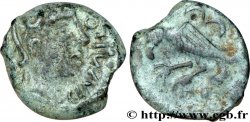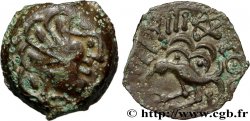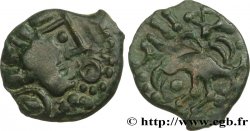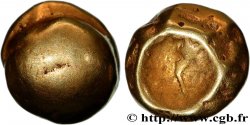v15_0668 - GALLIA SENONES (Regione di Sens) Potin à la tête “d’indien”
MONNAIES 15 (2002)
Prezzo di inizio : 95.00 €
Valutazione : 200.00 €
Prezzo realizzato : 125.00 €
Numero di offerte : 3
Offerta maxima : 136.00 €
Prezzo di inizio : 95.00 €
Valutazione : 200.00 €
Prezzo realizzato : 125.00 €
Numero di offerte : 3
Offerta maxima : 136.00 €
Tipo : Potin à la tête “d’indien”
Data: c. avant 52 AC.
Metallo : potin
Diametro : 17,5 mm
Asse di coniazione : 3 h.
Peso : 3,94 g.
Grado di rarità : R2
Commenti sullo stato di conservazione:
Exemplaire de haut relief sur un flan épais et lourd, pratiquement complet des deux côtés avec une patine noire, légèrement granuleuse au revers
N° nelle opere di riferimento :
LT.7417 - BN.7422, 7425-7432 - ABT.319 - Sch/L.- - Sch/SM.- - Sch/D.- - PK.92 - BMCC.389-397, S400-S409 - Z.-
Pedigree :
Cet exemplaire provient de MONNAIES II, 21 juin 1997, n° 280
Diritto
Titolatura diritto : ANÉPIGRAPHE.
Descrittivo diritto : Tête “d’indien” fortement stylisée à droite, cinq mèches courtes de cheveux tirées en arrière, bouletées aux extrémités ; l’œil est globulé ; trace de l’oreille.
Rovescio
Titolatura rovescio : ANÉPIGRAPHE.
Descrittivo rovescio : Cheval stylisé au pas à gauche, accosté de trois globules ; la queue du cheval est globulée, à son extrémité.
Commento
Flan très épais. Ce que nous avions interprété comme une esse en 1997 est en fait la déformation de l’oreille qui a ici une forme très particulière. La chevelure se caractérise par cinq mèches bouletées au lieu de six, normalement. Cette variété était déjà signalée par J. Piette en 1987 et n’est donc pas inédite, mais reste néanmoins rare. La bouche est fermée par un globule. Au revers, le troisième globule est pratiquement absent.
Very thick flan. What we interpreted as an esse in 1997 is in fact the deformation of the ear, which here has a very particular shape. The hair is characterized by five ball-shaped strands instead of the normal six. This variety was already noted by J. Piette in 1987 and is therefore not new, but nevertheless remains rare. The mouth is closed by a globule. On the reverse, the third globule is practically absent.
Very thick flan. What we interpreted as an esse in 1997 is in fact the deformation of the ear, which here has a very particular shape. The hair is characterized by five ball-shaped strands instead of the normal six. This variety was already noted by J. Piette in 1987 and is therefore not new, but nevertheless remains rare. The mouth is closed by a globule. On the reverse, the third globule is practically absent.







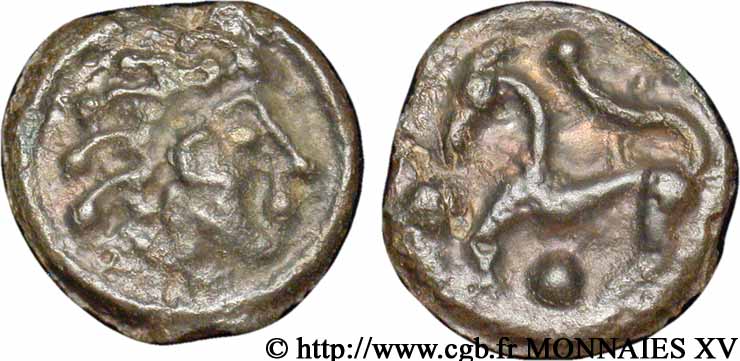
 Segnalare un errore
Segnalare un errore Stampate la pagina
Stampate la pagina Condividi mia selezione
Condividi mia selezione Fai una domanda
Fai una domanda Consegnare / vendere
Consegnare / vendere
 Descrittivo
Descrittivo